
Do you have a question about the Panasonic KX-TG5432 and is the answer not in the manual?
| Brand | Panasonic |
|---|---|
| Model | KX-TG5432 |
| Category | Answering Machine |
| Language | English |
Describes the different models of the Panasonic cordless phone.
Lists the accessories that are included with the product.
Lists accessories available for separate purchase.
Essential safety guidelines for operating the telephone unit.
Precautions for handling, charging, and disposing of batteries.
Advice for users with medical devices like pacemakers or hearing aids.
Optimizing signal range and operating conditions for best performance.
Instructions for cleaning and maintaining the unit.
Connecting the base unit to power and the telephone line.
Connecting the charger unit for specific models (KX-TG5432/5433).
Advice for users with xDSL internet service regarding noise filters.
Step-by-step guide for inserting the handset battery.
Instructions for initial and subsequent battery charging.
How to view the battery level icon on the handset display.
Details on talking and standby operating times after charging.
Step-by-step instructions for replacing the handset battery.
Identification of buttons, indicators, and ports on the base unit.
Identification of buttons, indicators, and ports on the handset.
Details and identification of the charger unit.
Instructions on how to navigate menus using the navigator key.
Explanation of symbols and messages shown on the base unit display.
Explanation of symbols and messages shown on the handset display.
How to use the handset's soft keys to select functions.
Manual steps to set the current date and time on the unit.
Using Caller ID service to automatically adjust date and time.
Procedures for initiating a phone call from the handset.
How to adjust the audio volume during a call.
Instructions for operating the speakerphone function.
Accessing and calling from the last dialed numbers list.
Steps to answer an incoming call.
Features for automatic answering and temporary ringer muting.
Using the HOLD button to place calls on hold.
Using the MUTE button to silence the microphone during a call.
Feature to clarify voice for better understanding.
Enhances sound clarity in areas with potential interference.
Allows joining an ongoing call between handsets (specific models).
Inserting pauses for PBX or long-distance service dialing.
Accessing PBX features like Call Waiting or call transfer.
Switching dialing mode to tone for specific services.
Overview of phonebook features for manual-free dialing.
Steps to add names and phone numbers to the phonebook.
Guide for entering characters using the dial keys.
How to make calls to contacts stored in the phonebook.
Finding contacts by name or initial letter.
Procedures for modifying and deleting stored contacts.
Dialing stored information while on an active call.
Transferring contacts from one handset to another for KX-TG5432.
Transferring contacts from one handset to another for KX-TG5433.
Prerequisites and general features of the Caller ID service.
Details on displaying caller name/number and the caller list.
Customizing ring tones and indicator colors for specific callers.
Information about the caller list content and its purpose.
How to access the call history and return missed calls.
Modifying phone numbers in the caller list before dialing.
Enabling/disabling automatic editing of incoming phone numbers.
Saving call log entries into the handset's phonebook.
Procedures for erasing selected or all caller list items.
General use of intercom for calls between units.
Specific intercom instructions for the KX-TG5431 model.
Specific intercom instructions for the KX-TG5432 model.
Making intercom calls between two handsets.
Initiating intercom calls from the base unit to a handset.
Making intercom calls between handsets for KX-TG5433.
Transferring an outside call between handsets.
Transferring calls without speaking to the receiving handset first.
Enabling and participating in conference calls with two handsets.
Overview of menu-based programming for handset features.
A chart detailing programmable functions and their corresponding pages.
Adjusting the volume level for the handset ringer.
Selecting different tones and melodies for incoming calls.
Setting the tone that signals an incoming call during an intercom call.
Enabling/disabling answering calls by simply lifting the handset.
Turning the voice enhancer on or off for clearer conversations.
Enabling or disabling the Caller ID number auto edit feature.
Adjusting the contrast level of the handset display.
Choosing the display language between English and Español.
Configuring dialing mode (tone/pulse) and flash time.
Setting the telephone line mode for proper operation.
Enabling or disabling audible key press tones.
Troubleshooting and re-registering a handset to the base unit.
Automatic time setting using Caller ID information.
Accessing product information and support via the internet.
Using special codes to program features directly without menus.
A chart listing feature codes and their settings.
Continuation of the direct commands chart for programming.
Introduction to the answering system's capabilities.
Steps to record a personalized greeting message.
How to listen to recorded greeting messages.
Procedure to delete a custom greeting message.
Information about using default greeting messages.
How to activate or deactivate the answering system.
Listening to callers leave messages in real-time.
Accessing and listening to recorded messages using the base unit.
Using buttons to repeat, skip, pause, or erase messages.
Accessing and listening to recorded messages using the handset.
Operating the answering system using dial keys.
Returning calls to callers identified by Caller ID during message playback.
Details on the answering system's storage limits for messages.
Accessing and controlling the answering system from an external phone.
Step-by-step instructions for remote operation via touch-tone phone.
Understanding the voice prompts during remote system control.
A list of dial key commands for remote answering system functions.
How to leave a message when calling the unit remotely.
Procedure to turn the answering system on from an external location.
Establishing a 2-digit security code for remote access.
Configuring the number of rings before the unit answers calls.
Setting the maximum message length allowed per caller.
Enabling handset notification for new messages.
Instructions for mounting the base unit on a wall plate.
Steps to attach the wall mounting adapter to the base unit.
Instructions for wall-mounting the charger unit.
Instructions for attaching and removing the belt clip.
Steps for connecting and using an optional headset.
List of displayed error messages and their causes/solutions.
Troubleshooting issues related to unit operation, links, and dial tone.
Resolving problems encountered during programmable settings configuration.
Resolving static, no ring, or other call/intercom quality problems.
Troubleshooting redial, headset use, and long-distance call problems.
Resolving issues with storing, copying, or searching phonebook entries.
Troubleshooting issues where caller name and number are not displayed.
Resolving problems with remote access, message playback, and timing.
Resolving errors related to battery charging status.
Information on unit functionality during power outages.
Requirements and interactions for Caller ID and Call Waiting services.
Information on FCC rules, REN, and telephone network compatibility.
Health advice regarding RF energy and hearing aids.
Guidelines for digital devices to prevent harmful interference.
Information on FCC radiation exposure limits and safe operating distances.
Details and contact information for the Caller IQ service.
Technical details including operating environment, dimensions, and power consumption.
Technical details for the handset, including battery type and dimensions.
Technical details for the charger unit (KX-TG5432/5433).
Details of the warranty period, coverage, and terms.
Instructions for sending the product for repair, including packing and documentation.
Conditions and damages not covered by the limited warranty.
Contact information, websites, and hours for product support.
Information on purchasing parts, accessories, and manuals online.
Contact details for service and support in Puerto Rico.
Methods to obtain help with setup, operation, or troubleshooting.
Instructions for packing and sending the product for repair.
Information regarding the intended region of use and local laws.
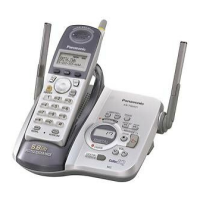

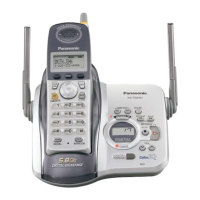

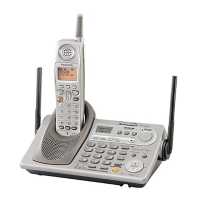

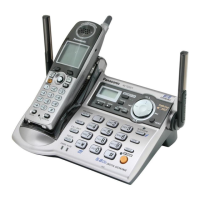

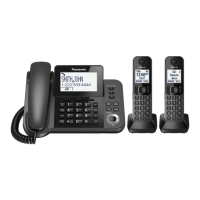

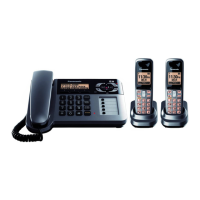

